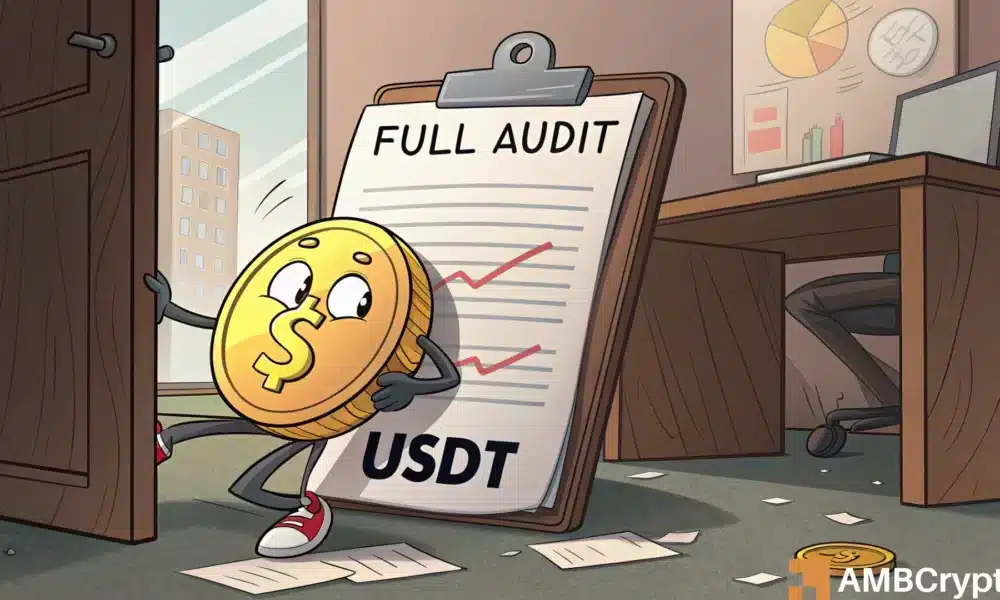The GENIUS Act: A Turning Point for Tether and the Stablecoin Landscape
The GENIUS Act represents a pivotal moment in the regulation of stablecoins, particularly for Tether (USDT), the world’s largest stablecoin issuer. With U.S. lawmakers pushing for stringent regulatory measures, Tether is faced with significant decisions: comply with the new guidelines, exit the U.S. market, or create a new stablecoin that aligns with these regulations. Spanning an 18 to 36 month compliance window, the Act could drastically alter Tether’s operations and the broader landscape of digital currencies.
Tether’s Compliance Dilemma Under the GENIUS Act
As the GENIUS Act inches closer to becoming law, Tether finds itself on a precarious precipice. Rhode Island Senator Jack Reed has explicitly called out the stablecoin in his support for the Act, emphasizing the need for more stringent oversight. With requirements that include full audits, transparent reserves, and capital cushions, Tether is now under intense scrutiny. The Act highlights how Tether has historically avoided such responsibilities, and leaves the company contemplating significant changes to its business model or potentially walking away from a key market.
Past Struggles with U.S. Regulators
Tether’s rocky relationship with U.S. regulators is underscored by its past legal issues. In 2021, the company settled with the New York Attorney General regarding allegations that its reserves were insufficiently backed. Tether paid an $18.5 million fine and was subsequently banned from operating in New York. Despite issuing quarterly attestations about its reserves since then, the lack of a comprehensive audit remains a considerable concern. The GENIUS Act reintroduces this scrutiny, challenging Tether to determine whether it can adapt to a new regulatory environment focused on transparency and compliance.
Three Paths Forward for Tether
Under the GENIUS Act, Tether is left with three main options: comply with the new regulations, exit the U.S. market entirely, or launch a compliant, U.S.-exclusive stablecoin. Compliance would require Tether to embrace full audits and enhance its anti-money laundering (AML) and know-your-customer (KYC) frameworks. Alternatively, exiting the U.S. market could mirror Tether’s previous actions in Europe following the implementation of MiCA regulations, though this would mean sacrificing access to America’s vast liquidity. Lastly, launching a new product tailored for U.S. users may help Tether maintain its foothold, yet this route could fracture its brand and invite further scrutiny.
The Future of U.S. Stablecoin Market Dynamics
Currently, Tether holds 62% of the stablecoin market, significantly outpacing Circle’s USDC, which commands 25%. Nevertheless, the GENIUS Act could prove beneficial for USDC as the regulatory landscape shifts. As a compliant U.S. issuer, Circle may attract institutional investors and users prioritizing safety and compliance. However, while compliance may enhance USDC’s standing, the market dynamics won’t change overnight. The stablecoin sector only accounts for a minor portion of the U.S. dollar supply, but its growth trajectory continues to trend upwards.
Implications for Digital Currency Landscape
The future of Tether, and by extension, the overall stablecoin market could greatly influence the evolution of digital currencies in the U.S. The decisions taken by Tether in response to the GENIUS Act could set precedents for future regulatory frameworks governing stablecoins. Should Tether falter, it opens the door for other competitors to fill the void. The interplay between compliance, market share, and regulatory reception will undoubtedly shape the digital dollar’s future, having far-reaching implications for both investors and institutions.
In summary, as Tether grapples with its next steps amidst intense scrutiny and regulatory challenges posed by the GENIUS Act, its future is uncertain. Creating a compliant, new product or adapting to existing regulations may be pivotal for its survival and market leadership in the world of stablecoins. The coming months will reveal whether Tether can navigate this regulatory upheaval or be overtaken by competitors like USDC as the stablecoin landscape shifts dramatically.


